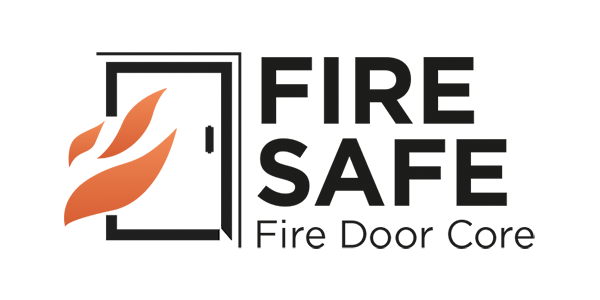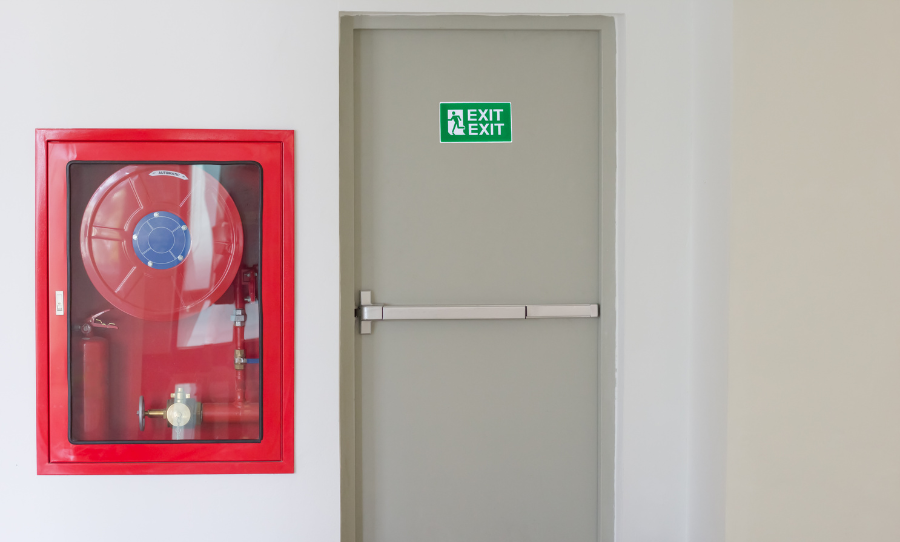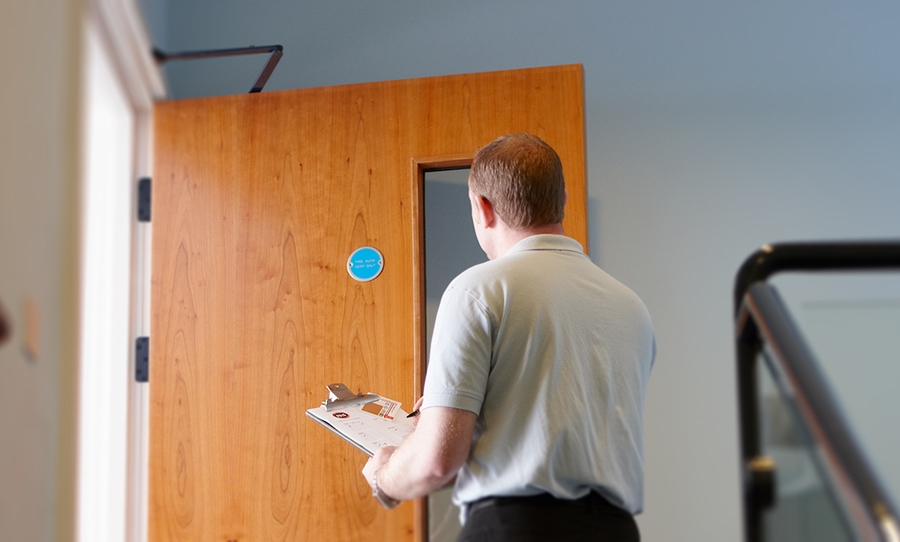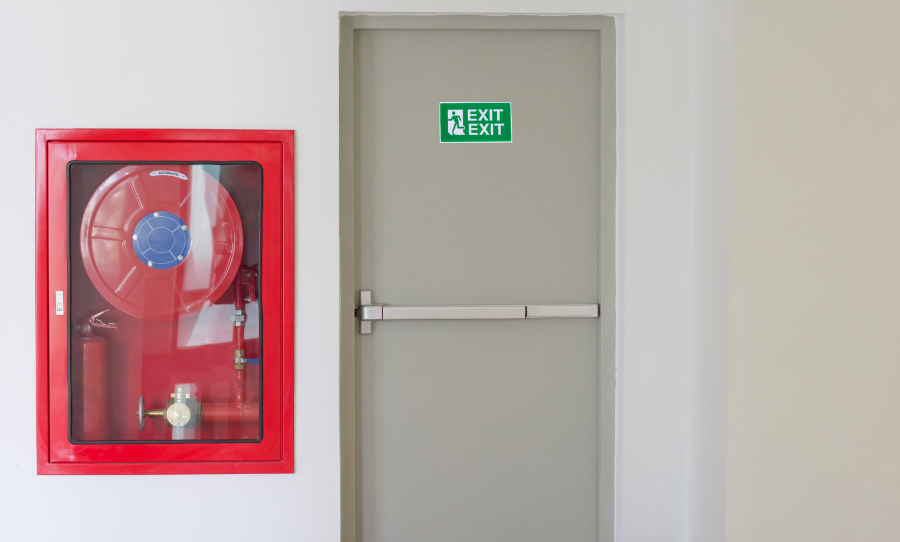What to do in the event of a fire
Your fire safe door plays a significant role in your fire evacuation plan
Needless to say, every home, organisation, workplace, or building needs to have an up-to-scratch fire evacuation plan. Preparing for the worst is an excellent practice – so that if something does happen, you and your team will be as calm and effective as possible.
At FireSafeDoors, we take your safety very seriously, which is why we take extra measures to create the right fire door for your building. If your fire-evacuation plan needs updating, take a look at our checklist to ensure you’ve got all the bases covered.
Before A Fire
- Make sure everyone in your building knows and understands the fire-evacuation plan
- Double check to make sure both your fire exits are clear. The last thing you want is an obstacle in your way when you’re trying to escape a building
- Ensure all escape routes are distinctly outlined (Green Fire Exit Sign) to eleminate potential confusion.
- Don’t leave any fire doors wedged open. Fire Doors need to block off oxygen to prevent smoke and fumes from surviving. Open to escape then check its firmly closes behind you.
- Check all fire extinguishers in the building have been inspected and have not expired.
- Establish a fire warden of the building. This person should be properly trained and prepared to lead others out of the building in the case of an emergency.
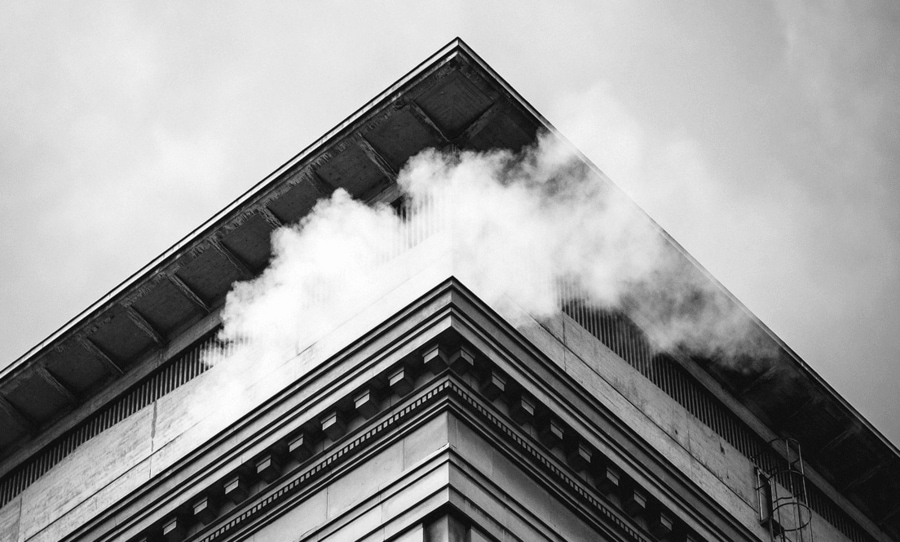
During A Fire
Step 1 – Raise The Alarm
If you’re the first to notice the threat of a fire, no matter its level of concern, it’s your immediate responsibility to let everyone in the building know. A fire can escalate rapidly, so find the alarm as soon as possible. If you can’t find the alarm, shout loudly to inform others and get everyone together. Try not to scream – a panicked team is not going to function ideally. Now’s also the best time (if safe to do so), to contact the authorities. Don’t be a hero. Call 000 and ask for the fire brigade.
Step 2 – Make Your Way To The Nearest Exit
Now that everyone is together and accounted for – it’s time to escape.
Don’t bring belongings or look for valuables. Following the fire warden’s instructions, walk briskly (don’t run) towards the nearest fire door and don’t look back. It’s crucial that no one uses an elevator to get to an exit. If you need to change levels, use the stairs.
Step 3 – Exiting The Building
As you near towards to the exit, make sure you shut all windows and doors behind you. This will limit the spread of the fire.
If a door handle is hot, the fire is probably on the other side and you’ll need to find another exit. Remember that windows are always an option if necessary.
If smoke reaches you on the way out, remember the tried-and-true ‘STOP’ ‘DROP’ & ‘ROLL’. This is also the best way to extinguish your clothes if they catch on fire.
Step 4 – If You Can’t Leave The Building
Whatever you do, don’t panic. There are still plenty of things you can do to maximise safety.
Firstly, in whatever way you can, make someone aware of your situation. Use a phone, scream and shout, whatever it takes. This means help is on the way.
Now, close up any possible exits and stay close to the ground. If there’s any rags or towels to wet, do so and keep them over your mouth. You can also block up doors by putting wet rags around the edges. If your clothes catch fire, remember ‘STOP’ ‘DROP & ‘ROLL’.
Have a fire door related enquiry? We’re happy to help. Contact Fire Safe Doors at [email protected] or call (02) 9070 0732, and we’ll work through a plan for your needs.
